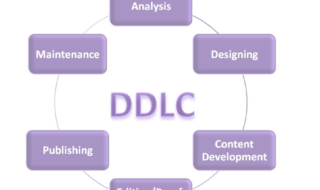The EDM world is filled with a variety of different types of machines. This article will help you understand the differences between them to make an educated decision when it comes time to purchase one for your needs. The list below will provide information on each type of machine, what they are used for, and their benefits.
Contents
3D Printer
A three-dimensional printer is an EDM machine that can print metal parts directly from a computer-aided design (CAD) file. This type of EDM machine works by laying down thin layers of powdered aluminum, brass, or copper alloy which are then shaped into the desired form one layer at a time using electricity and water to create very fine features.
The benefit of having this type of EDM machine will allow you to produce parts with unique shapes and geometries in-house instead of purchasing them externally for higher costs. It has become popular among companies because it allows companies to manufacture prototypes faster than ever before.
This particular type of EDM machine uses its’ own CAD/CAM software running on PCs that are installed with the company’s proprietary software.
The CAD/CAM system allows users to design parts, simulate cutting paths, and monitor machining progress in real-time without having to leave their desks or have multiple computers connected at once. This makes it easier for one engineer to control all aspects of the process from beginning to end if needed.
The advanced user interface called HMI (Human Machine Interface) can be programmed using a PC keyboard, mouse, touch screen displays as well as dial controls on some models that are designed specifically for simple operation purposes by workers who do not have any previous experience with EDM machines.
Wire EDM
A wire EDM machine is a type of EDM that cuts metal using a thin, coiled electrode called an “end mill.” It uses an electrical current to heat the end mill and water jets to remove small chips from the surface.
This process can be repeated thousands of times per minute until all material has been cut away for creating precise holes in very hard materials such as titanium or Inconel. The most common types of shapes produced by wire EDM are straight slots and contours with sharp corners, recessed pockets, internal cavities, and deep counter-sinks.
Wire EDMs work best on flat surfaces rather than curved ones so it’s important to design your part accordingly if you want accurate results every time without fail.
CNC Machine
This type of EDM machine is basically an automated lathe. It can hold the part being cut in any one of its’ five different machining stations and make precise cuts to produce complex shapes with ease.
The benefits associated with this particular EDM are that it will work on nearly all types of metals, allows for quick setups, is accurate enough to perform intricate tasks like gear-cutting operations (which aids in reducing lead times), offers high-quality surface finishes, has a large range of cutting speeds available depending on material hardness or softness. as well as several other reasons listed below:
- CNC machines offer more flexibility than CNC turning centers because they’re able to use end mills instead of solid tools which makes them ideal for cutting complex shapes.
- CNC machines are able to perform milling operations as well as drilling and boring so they can handle a wide range of jobs without having to change tools – which saves time, money, and resources in the long run.
Laser Cutter
A laser cutter is an EDM machine that works by using a high-energy beam of light to remove metal alloys from the surface in order to create precise contours, shapes, or holes. This type of EDM is often used for engravings and cutting very thin sheets like leather, rubber, paper, foam board, textiles, as well as wood, and other similar materials when needed.
The benefits associated with this particular type of EDM are extremely accurate cuts every time without fail (which can be beneficial when creating models or prototypes), low tool wear rates which result in long part life span even when cut many times over again; they’re also cost-effective depending on what you’re trying to achieve overall.
Belt Sander
A belt sander is an EDM machine that works by running a sanding belt over the material being cut to grind away all of the unwanted areas. This type of EDM can be used for making precise cuts, profiling edges or curves, and creating flat surfaces on materials like wood or metal with great accuracy.
The benefits associated with this particular type of EDM are it allows you to create several different types of shapes quickly without having to use any special tools thus saving time overall.
They’re also available in many different sizes which makes them more versatile than other machines so if one isn’t able to handle your job then there’s always another option out there waiting for you.
Laser Engraver
A laser engraver is an EDM machine that works by using a high-energy beam of light to remove metal alloys from the surface in order to create precise contours, shapes, or holes. This type of EDM is often used for engravings and cutting very thin sheets like leather, rubber, paper, foam board, textiles; as well as wood, and other similar materials when needed.
The benefits associated with this particular type of EDM are extremely accurate cuts every time without fail (which can be beneficial when creating models or prototypes), low tool wear rates which result in long part life span even when cut many times over again; they’re also cost-effective depending on what you’re trying to achieve overall.
Water Jet Cutter
A water jet cutter is an EDM machine that works by using a high-pressure stream of liquid (usually, but not always water) to cut through nearly any material with ease. This type of EDM can be used for making precise cuts and engravings on metal alloys as well as plastics – so it’s very versatile overall.
EDM Machine
An EDM machine is an electrical discharge machining process of removing material from a workpiece by using electricity to generate heat, which generates plasma that melts the metal being cut. This type of EDM is often used for cutting complex shapes and profiles.

This article has provided information on the different types of EDM machines. It can be hard to keep track of the different types of EDM machines and how they each work. For those who are unfamiliar, we’ve provided a list below that should help you understand all there is to know about these tools.




